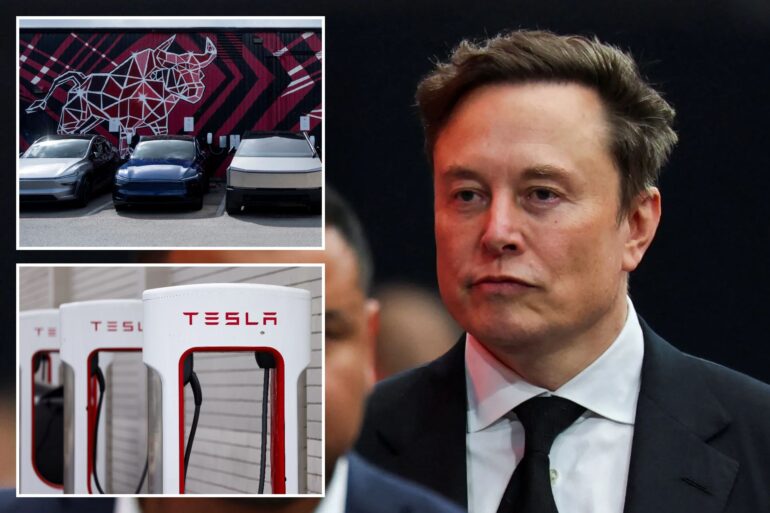🔴 Website 👉 https://u-s-news.com/
Telegram 👉 https://t.me/usnewscom_channel
Tesla reported record third-quarter revenue that beat Wall Street estimates on Wednesday, driven by the highest quarterly sales of its electric vehicles as US buyers rushed to lock in a key tax credit ahead of its expiration last month.
But Tesla’s profit failed to live up to analysts’ expectations, in part due to tariff and research costs, as well as a drop in income from regulatory credits that are expected to continue to fade away with recent legislation passed by the Trump administration.
Shares of the Austin, Texas-based company were down about 2% to $427.29 in extended trading.
Demand for Tesla’s vehicles and those of its rivals is also expected to drop through the rest of the year without the tax credits that have been a key driver of EV sales. Tesla did not provide a full-year forecast.
Tesla’s $1.45 trillion valuation largely reflects investor bets on CEO Elon Musk’s pivot to robotics and AI, but vehicle sales remain key to the financial stability of the company while those products are being developed.
“While we face near-term uncertainty from shifting trade, tariff and fiscal policy, we are focused on long-term growth and value creation,” the company said on Wednesday.
Apart from the removal of tax credits and the waning sales of regulatory credits that traditional automakers bought to make up for their polluting vehicles, Tesla is also grappling with tariffs imposed by the Trump administration on auto-part imports.
To combat a demand drop, Tesla introduced lower-cost “Standard” variants of Model Y and Model 3 vehicles earlier this month, stripping out a myriad of premium and basic features and lowering prices by about $5,000 to $5,500.
While Tesla hopes the cheaper variants will drive higher volumes, analysts warn the move will squeeze margins as thousands of dollars of cost cuts per vehicle may not fully compensate for lower selling prices.
Tesla said it was on track to start volume production of its Cybercab robotaxi, Semi truck and Megapack 3 battery in 2026.
The electric vehicle maker reported total revenue of $28.1 billion for the third quarter ended September 30, compared with analysts’ average estimate of $26.37 billion, according to data compiled by LSEG.
Profit per share in the third quarter was 50 cents, below analysts’ estimates of 55 cents.
Automotive regulatory credits, once a key driver of profit, fell to $417 million in the quarter from $739 million a year ago and $435 million in the second quarter.
Tesla reported gross margin of 18%, compared with estimates of 17.5%. Its closely watched automotive gross margin, excluding regulatory credits, was 15.4%, compared with an average estimate of 15.6%, according to 19 analysts polled by Visible Alpha.
Tesla flagged rising expenses in multiple areas, including a 50% rise in operating expenses driven by AI and other research and development projects, an increase in stock-based compensation, and higher costs per vehicle due to an increase in tariffs and other issues.
Tesla’s limited rollout of its self-driving “robotaxi” service in Austin, Texas, earlier this year marked a key strategic pivot, underpinning investor expectations that the company will transition from pure vehicle sales to focusing on self-driving technology.
Wall Street expects Tesla’s deliveries in 2025 to fall 8.5% due to the expiration of the tax credit, reliance on older models and rising competition. CEO Musk’s embrace of right-wing politics has also alienated some potential buyers.
Some analysts remain skeptical of a strong rebound as the cheaper version could take away sales of more profitable premium vehicles.

